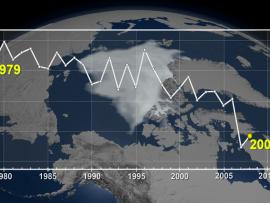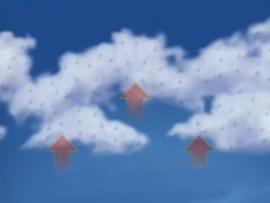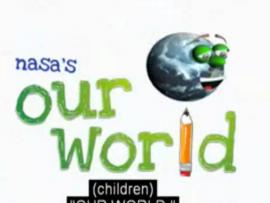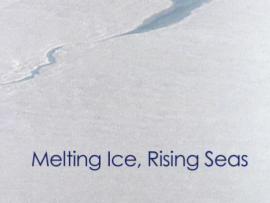Browse Resources
Browse Resources
Primary Topic:
Subtopics:
Type:
Keywords:
Summary:
The cryosphere consists of those parts of the Earth's surface where water is found in solid form, including areas of snow, sea ice, glaciers, permafrost, ice sheets, and icebergs. This animation shows fluctuations in the cryosphere.
Primary Topic:
Subtopics:
Type:
Keywords:
Summary:
Learn about precipitation and how clouds are formed. Find out why scientists study clouds and how you can help NASA collect cloud observation data as part of the Students' Cloud Observation OnLine, or S'COOL, Project.
Primary Topic:
Subtopics:
Type:
Keywords:
Summary:
This video covers the impact that climate change is having on Earth's oceans, and shows how technology is being used by NASA to help us learn how oceans are responding to climate change.
Primary Topic:
Subtopics:
Type:
Keywords:
Summary:
This NASA video segment explains the formation of hurricanes. Go behind the scenes with a meteorologist at the Weather Channel in Atlanta, Georgia to learn how scientists predict hurricanes and hurricane formation.
Primary Topic:
Subtopics:
Type:
Keywords:
Summary:
This NASA video segment describes the different types of clouds and cloud formation. The relationship between clouds and weather on Earth is demonstrated.
Primary Topic:
Subtopics:
Type:
Keywords:
Summary:
This NASA video segment focuses on the relationship between weather and climate. Learn how heat, air pressure, winds and moisture work together to produce local weather.
Primary Topic:
Subtopics:
Type:
Keywords:
Summary:
Learn how NASA uses Earth observing satellites to monitor conditions in the Chesapeake Bay over time. Information about pollution, eutrophication, land cover and watershed runoff helps water managers enact policies to improve the health of the Bay.
Primary Topic:
Subtopics:
Type:
Standards:
Keywords:
Summary:
One of the biggest changes to global agriculture is less about the food itself as it is about the water we use to grow it. In some areas, farmers are using freshwater resources - including groundwater - at an alarming rate.
Primary Topic:
Subtopics:
Type:
Standards:
Keywords:
Summary:
Using satellites, lasers, and radar in space, and dedicated researchers on the ground, NASA is studying the Earth's ice and water to better understand how sea level rise might affect us all.
Primary Topic:
Subtopics:
Type:
Standards:
Keywords:
Summary:
Earths climate is changing at an unprecedented rate, and as our home planet warms, so does the ocean. Warming waters have big consequences for phytoplankton and for the planet.











